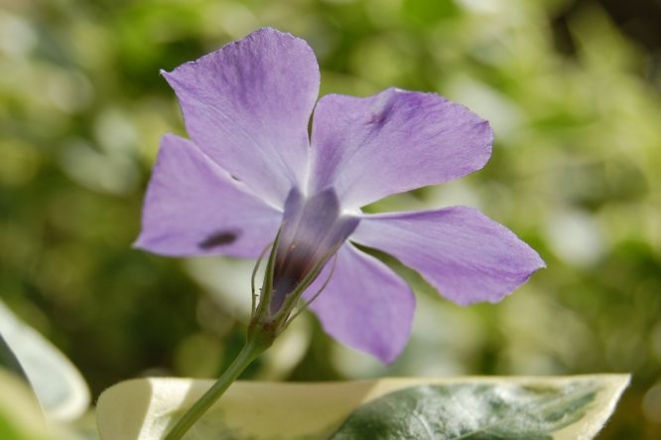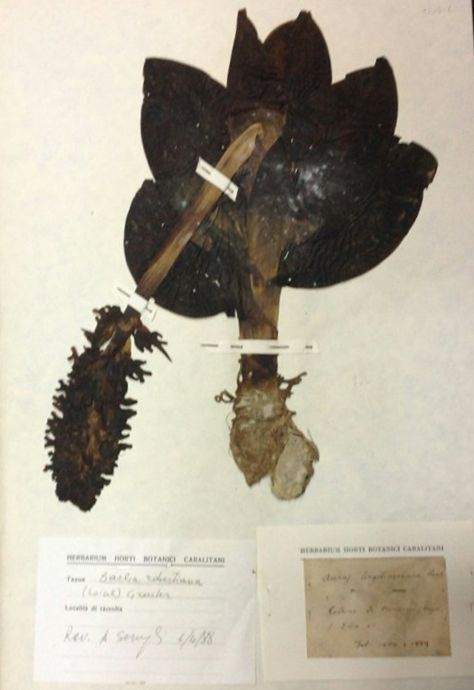The Herbarium of Cagliari
The exsiccata collection of the Botanical Garden
The nineteenth-century building along Sant'Ignazio from Laconi Boulevard, that hosts the Institute of Botany, houses one of the most important cultural innovations of research visited by experts come from all over the world, the Herbarium Museum.
Situated into the majestic flower path of the Botanical Vegetal Garden, is presented as an atypical museum, because it is not expositive, but dedicated to the preservation of the exsiccata, dehydrated plants that are classified with a scientific and educational aim.
The Herbarium was born during the establishment of the Botanical Vegetal Garden (1862-1866) by Patrizio Gennari and it has been taken a census thanks to its potentiality and to its heritage in the Index Herbariorum with the abbreviation of Herbarium CAG and it adheres to the CIMCAS (Interdepartmental Center Museums, Collections and Historical Archives of the University in Cagliari).
It is composed by almost sixty-five thousand exsiccata of vascular plants to which important collections of Algaes, Bryophytes, Mushrooms and a peculiar Cecidoteca, namely a collection of "Galle", are added. There are exsiccata with an excellent state of conservation, the most ancient date back to 1857 and they represent important proofs of the history of Botany in Sardinia.

It includes almost thirty-five thousand samples of the Sardinian vascular flora and almost thirty thousand samples of various origin. The samples are organized according to the taxonomic cataloguing suggested by Barbey. In ancient times, the first Herbariums were illustrated, namely books with illustrations used for highlighting the properties of the plant in descriptive terms.
On the contrary, at the end of Fifteenth Century, there was the collection of portions or of the whole dehydrated plants (hortus siccus) stapled on the special sheets into which there is also the label that shows the Latin pair and the name of the author, the place and the date of collection and the Legit et Determinavit, the name of who collected it and of who has defined it.
Indeed, the Herbarium, was born for scientific aims and it represents an essential source of data both for the taxonomic and phytogeographical research and for the applied research based on the studies of Biodiversity and environmental supervision – according to what explained by the Professor Cogoni – and some species, that once belonged to our flora, nowadays are present only among the samples of the Herbarium.

All the samples represent fundamental documents of study and their preparation is realized into the Pre-Herbarium, a location that is provided with a freezer where there are the plants after the use of presses and tampons for drier aims and in the stage that is previous to their exposition, to which the central museum hall is destined.
Here the exsiccata are inserted in the appropriate wardrobes and they can be examined thanks to the careful help by experts that explain its nature. Into the Museum there is the emblematic Herbarium Herry Keller of 1871, too, expression of the "intermediary conception between the illustrated Herbarium and that current".
The Herbarium in Cagliari is a place of culture with a big scientific value, but also historical, where numerous botanists work and it offers an important material of study, still more accurate, that can be exposed to the sharing of lots of users. For this purpose, they are involving to the digitalization of the whole archive, that began thanks to the participation to the project on the National net of museums, centers and academic museum systems "Sirio".
Museo Herbarium
Address: Viale S. Ignazio 13, 09123 Cagliari (CA)
Phone: +39 070 675 3501
http://unica2.unica.it/scienzebotaniche/Erbario.htm
E-mail: dipscbot@unica.it